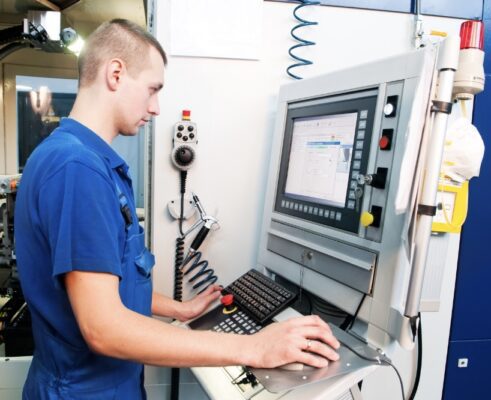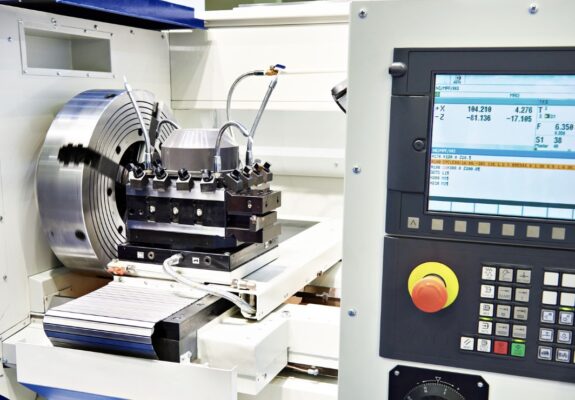The precision CNC machine shop industry is at the forefront of technological innovation, shaping the future of manufacturing with unparalleled accuracy, efficiency, and versatility. In 2024, precision CNC machine shops are advancing quickly, setting new standards in manufacturing. This article offers a comprehensive overview of the state-of-the-art developments that are redefining precision CNC machining, emphasizing the integration of cutting-edge technologies and their implications for businesses worldwide.
Revolutionizing Manufacturing with Enhanced Automation and Robotics
The transformation of precision CNC machine shops through advanced automation and robotics stands out as a hallmark of modern manufacturing. This shift towards more automated operations is a game-changer, significantly streamlining production workflows, reducing manual errors, and enhancing overall productivity. Robots, with their ability to execute tasks with high precision and consistency, not only elevate product quality but also safeguard operator safety by taking over hazardous tasks. The advent of sophisticated automation technologies minimizes production downtime, facilitating a smoother, more continuous manufacturing process.
The Emergence of AI and Machine Learning in CNC Machining
The incorporation of Artificial Intelligence (AI) and machine learning represents a paradigm shift in precision CNC machining. These technologies are at the cutting edge, optimizing machining processes, preempting challenges, and curbing waste.
AI can analyze a lot of data to find patterns and relationships. This helps manufacturers improve production processes. The goal is to achieve better efficiency and quality. Furthermore, machine learning’s prowess in predicting tool wear with remarkable accuracy means maintenance can be performed more proactively, reducing unplanned downtime and maintaining a steady production flow.
Innovations in Tooling and Materials
The development and adoption of advanced tooling and materials have significantly influenced the precision CNC machining industry.
Cutting tools crafted from ultra-durable materials like polycrystalline diamond (PCD) and cubic boron nitride (CBN) have set new standards for wear resistance, cutting speed, and finish quality. New materials like carbon fiber and strong alloys are improving precision CNC machining in industries like aerospace and medical devices. These advancements are increasing precision and reliability, making CNC machining more versatile and important in various industries.
The Advantages of Multi-Axis Machining
The rise of multi-axis machining technology marks a significant leap forward for the precision CNC machining shop sector. By facilitating the production of complex shapes in a single setup, this technology reduces the margin for error and shortens production timelines, translating into substantial cost savings and increased competitiveness in the market. The accessibility of 5-axis and 6-axis machines has revolutionized the manufacturing of parts with intricate geometries and strict tolerance requirements, enabling a level of precision and complexity that was once deemed unattainable.
Hybrid Manufacturing: A New Frontier
The integration of additive manufacturing (3D printing) with traditional CNC machining has unveiled new possibilities in manufacturing complex parts and rapid prototyping. This innovative approach leverages the strengths of both subtractive and additive processes, optimizing material usage and accelerating production timelines. The hybrid model is especially valuable in industries such as aerospace, medical, and automotive, where components often necessitate complex geometries and utmost precision. This convergence of technologies not only fosters innovation but also propels the manufacturing industry toward more sustainable practices by reducing waste and enhancing resource efficiency.
Looking Ahead: The Future of Precision CNC Machining
As we examine the landscape of precision CNC machine shop operations in 2024, it’s evident that the industry is undergoing a transformative phase, driven by technological advancements that redefine the boundaries of manufacturing. Using automation, AI, advanced materials, and new manufacturing techniques is improving CNC machining by making it more efficient, accurate, and versatile. This is also leading to innovation in different industries.
These technological strides are empowering businesses to tackle complex manufacturing challenges, reduce errors, and push the envelope of what’s possible in precision machining. The forward-thinking companies that adopt these advanced technologies stand to gain a significant competitive edge in a rapidly evolving manufacturing landscape.
In the future, precision CNC machining has a lot of potential for growth. New technology breakthroughs will bring even more advanced capabilities to the industry.
Staying abreast of these developments is crucial for businesses aiming to leverage the full spectrum of benefits offered by these innovations and to drive forward the frontier of manufacturing excellence. In this dynamic and technology-driven era, adaptability and innovation are the keys to success, and the precision CNC machine shop industry is well-positioned to lead the charge in the next wave of the manufacturing revolution.
 IN-X Machine, Inc.
IN-X Machine, Inc. 
